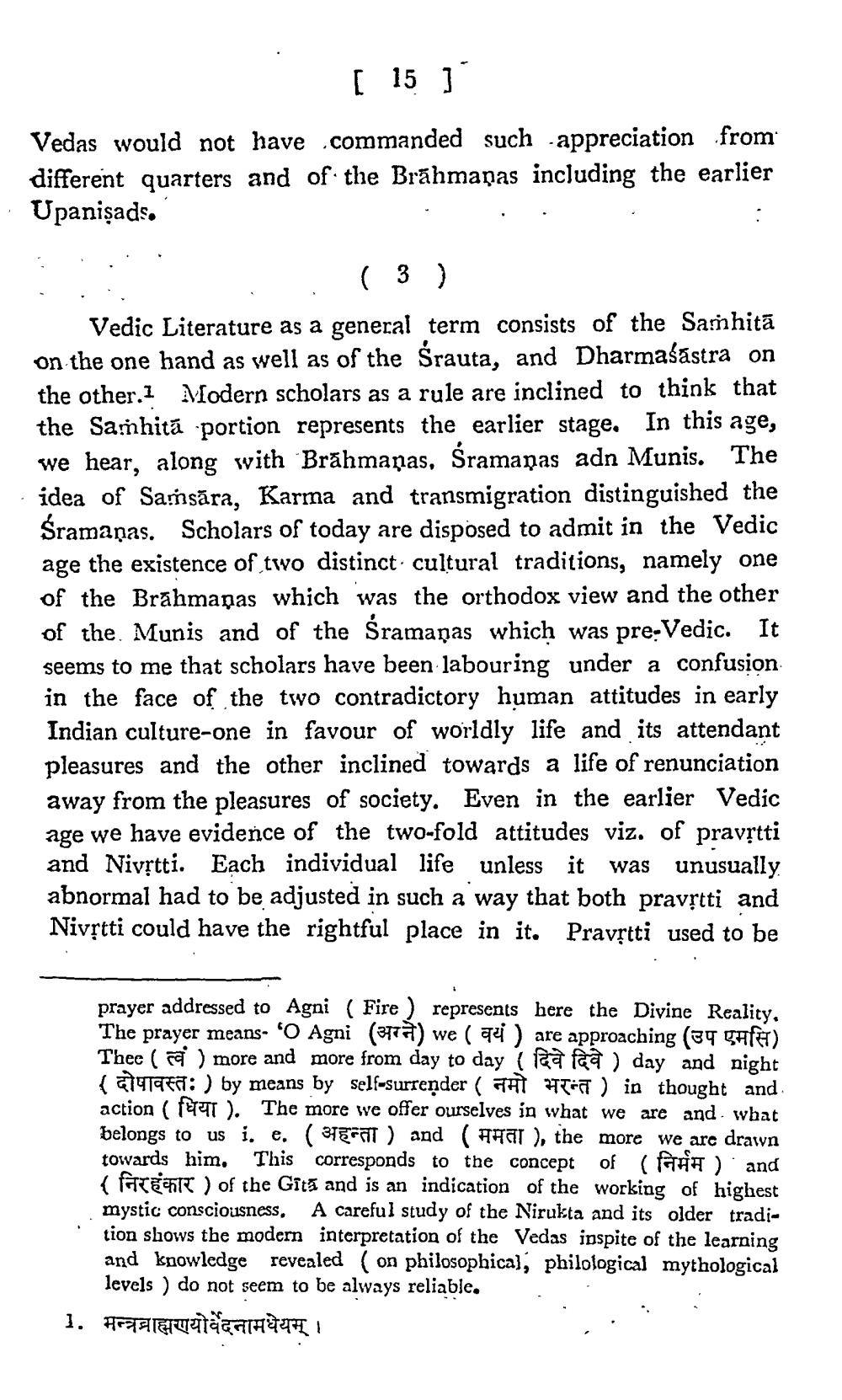________________
[ 15 ] Vedas would not have commanded such appreciation from different quarters and of the Brāhmaṇas including the earlier Upanişads.
( 3 ) Vedic Literature as a general term consists of the Samhita on the one hand as well as of the Srauta, and Dharmasastra on the other.I Modern scholars as a rule are inclined to think that the Samhitā portion represents the earlier stage. In this age, we hear, along with Brāhmaṇas, Šramapas adn Munis. The idea of Samsāra, Karma and transmigration distinguished the Sramaņas. Scholars of today are disposed to admit in the Vedic age the existence of two distinct cultural traditions, namely one of the Brāhmaṇas which was the orthodox view and the other of the. Munis and of the śramaņas which was pre-Vedic. It seems to me that scholars have been labouring under a confusion in the face of the two contradictory human attitudes in early Indian culture-one in favour of worldly life and its attendant pleasures and the other inclined towards a life of renunciation away from the pleasures of society. Even in the earlier Vedic age we have evidence of the two-fold attitudes viz. of pravịtti and Nivịtti. Each individual life unless it was unusually abnormal had to be adjusted in such a way that both pravṛtti and Nivịtti could have the rightful place in it. Pravṛtti used to be
prayer addressed to Agni ( Fire ) represents here the Divine Reality. The prayer means 'O Agni (3779) we ( qui) are approaching (39 CHF) Thee (ra) more and more from day to day (feafaa ) day and night (a an: ) by means by self-surrender ( AT HTET ) in thought and action (ET). The more we offer ourselves in what we are and what belongs to us i. e. (TEOT ) and (AHAT ), the more we are drawn towards him. This corresponds to the concept of (AFA) and (FTTETTE ) of the Gits and is an indication of the working of highest mystic consciousness. A careful study of the Nirukta and its older tradition shows the modern interpretation of the Vedas inspite of the learning and knowledge revealed (on philosophical, philological mythological
levels ) do not seem to be always reliable. 1. Fragmataamhet




